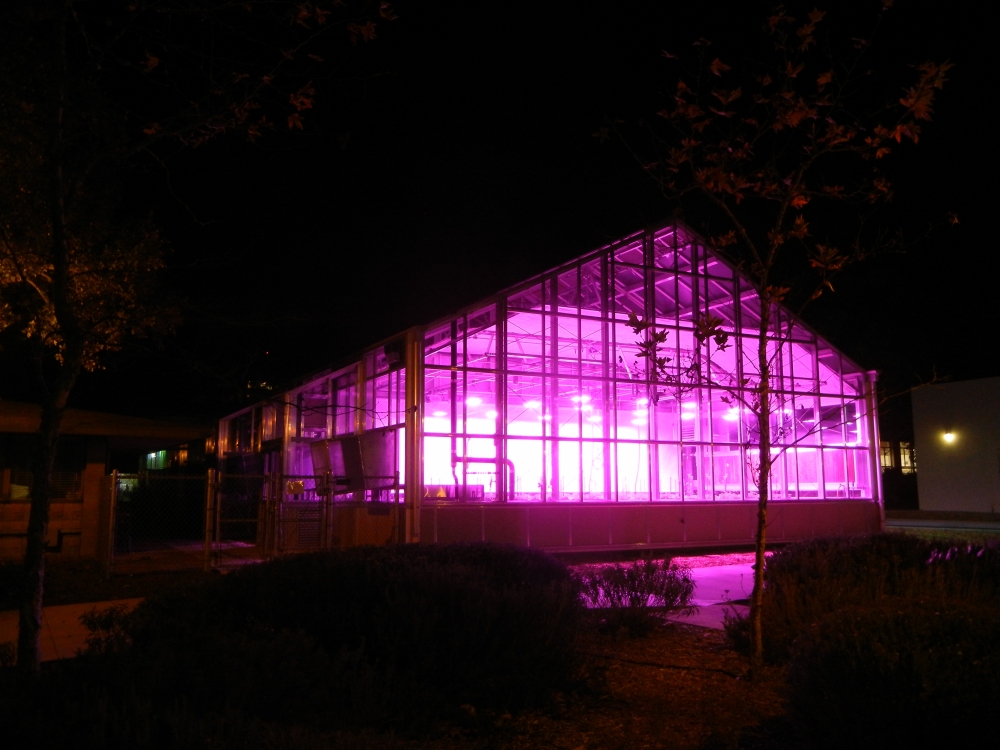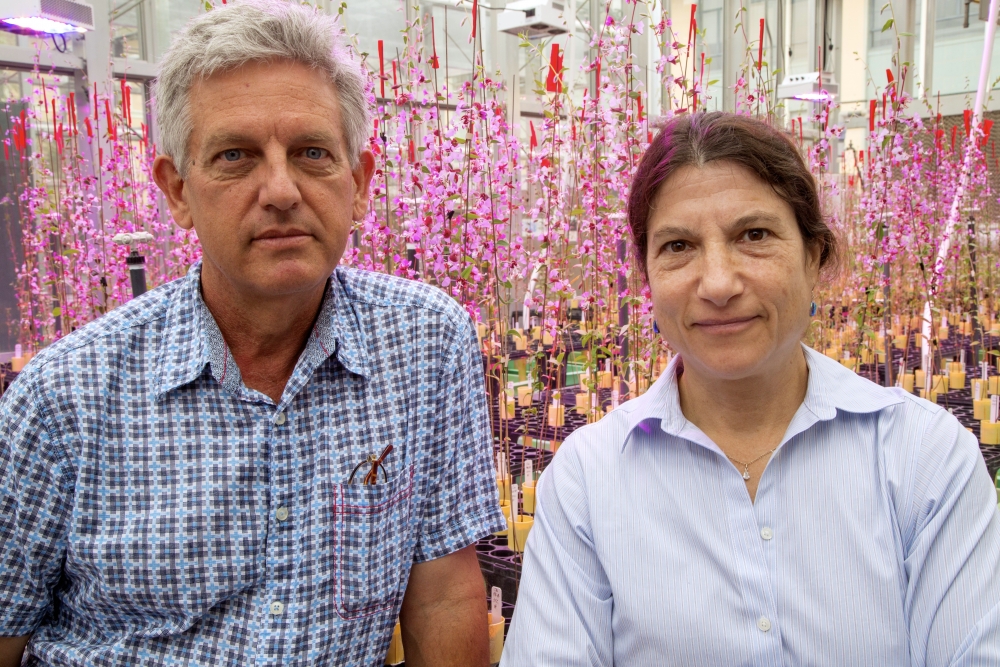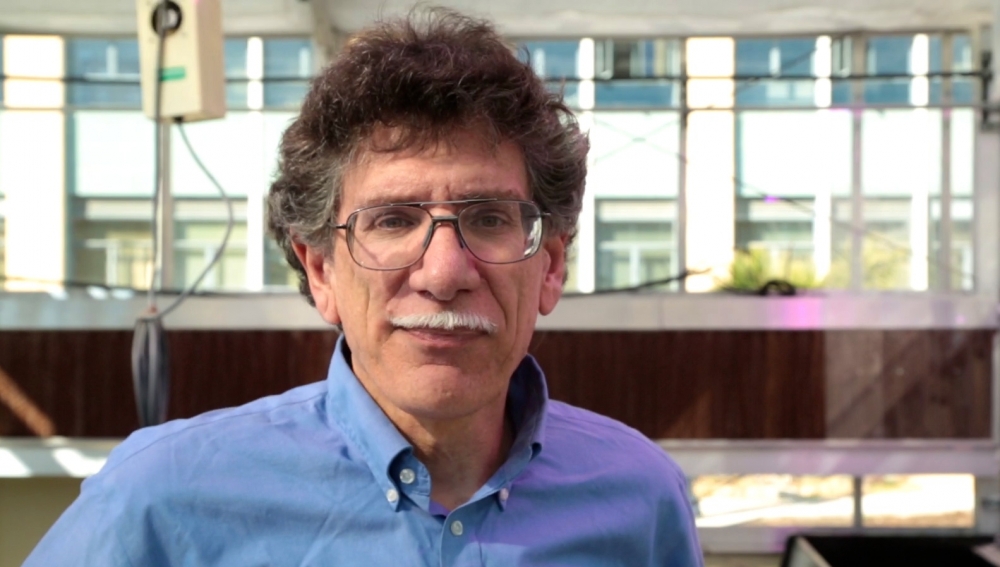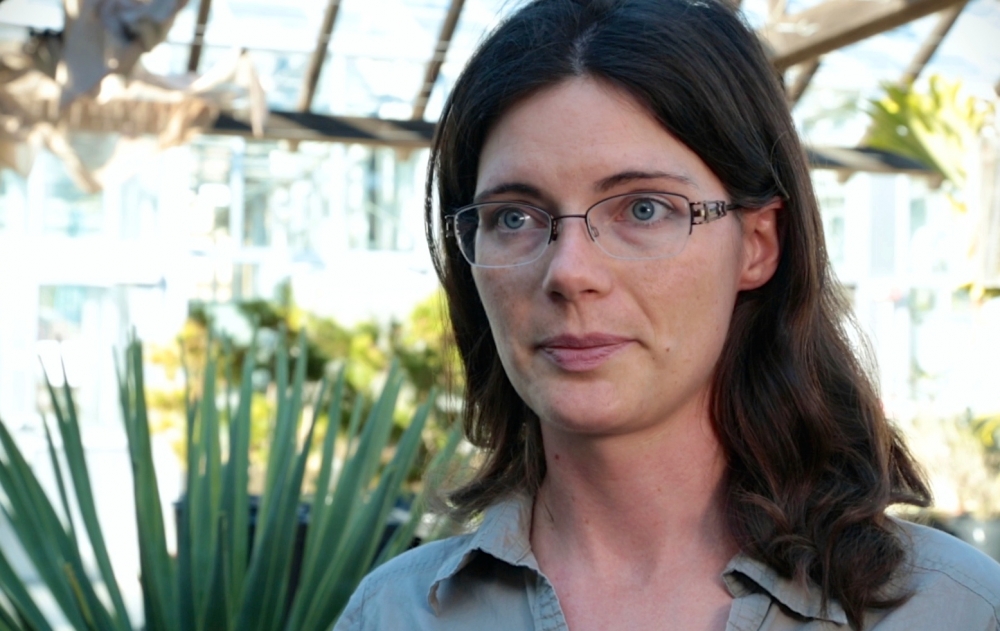A Better, Greener World





At UC Santa Barbara, the high-tech research greenhouses are more sophisticated than many smart homes. Temperature and lighting are automated to create and maintain specific environmental conditions researchers need for experimental work. For example, when the temperature rises, the sensors in the thermostat signal shade cloths to close in order to modify the amount of sunlight coming into the greenhouse.
The first of the three state-of-the-art facilities began with a gift from the late environmental studies professor Barry Schuyler and his wife, Jean. With that facility in process, the Department of Ecology, Evolution and Marine Biology (EEMB) Greenhouse Oversight Committee applied for and received a $1.7 million National Science Foundation grant to complete the Schuyler Greenhouse and to build two others, including an alpine greenhouse.
“The campus is lucky to have these state-of-the art buildings to support the botanical research that goes on here,” said greenhouse manager Danica Taber.
In fact, research conducted by EEMB professor Scott Hodges and his postdoctoral associate Evangeline Ballerini would have been out of the question without the greenhouses. Hodges and Ballerini grow columbines (Aquilegia) in order to study the genetic basis of nectar spurs, a recently evolved trait. These hollow tubes fill with nectar and require pollinators to probe deeply to get at the sweet stuff. In doing so, they pollinate the flowers. The evolution of nectar spurs has led to the diversification of the genus with some species relying on bumblebees, some on hummingbirds and yet others on hawk moths for reproduction.
The researchers bred a Chinese species of columbine that does not have nectar spurs with a common one that does to create a hybrid population for study. They sequenced the genomes of hundreds of plants and found that a single place in the genome determines whether or not a plant develops nectar spurs. Ballerini’s ongoing work seeks to identify the specific gene and determine how it has evolved to allow spurs to develop.
“These new greenhouses make this type of experiment possible,” Hodges said. “We weren’t able to do controlled crosses in the old greenhouses because hummingbirds and bumblebees could get inside and pollinate plants we didn’t want them to. Also, an experiment like this where we grow upward of 500 plants wasn’t possible before because of limited space, and we need those kinds of numbers to narrow down where that gene might be.”
Susan Mazer, another EEMB professor, studies the genus Clarkia, commonly known as “farewell to spring.” These California natives are well known for being the last spring wildflowers. “They flower when the rest of the vegetation is brown and dry, and so are a good model for studying adaptations to drought,” she said. “In addition, they’re well known for having evolved a range of mating systems.”
Some Clarkia species are adapted for outcrossing, which means they rely on insects visiting them to transfer pollen from the flower of one plant to the receptive stigma of another plant. Other Clarkia species produce pollen in close proximity to their stigmas so they can self-fertilize. Currently, Mazer is studying the wide variety of traits that evolve with self-fertilization to determine how life history, physiology and pollen performance differ between outcrossing and self-fertilizing species.
“Having a common environment in which the temperature and lighting are controlled much better than they were previously means there is a lot less environmentally induced variation in plant performance,” Mazer said. “The signal that we get based on the genetic differences among the plants grown in these greenhouses is expressed much more clearly than when there’s a lot of environmental noise.”
According to Taber, the alpine greenhouse is unique, not only in Santa Barbara but also on the West Coast and even throughout country. “The approach that we’ve taken here enables greenhouse researchers to have access to cold temperatures without going to the expense of cooling the entire greenhouse,” Taber explained. “We do that by using chilling benches, much like what you’d see in the deli section of your grocery store.”
EEMB professor Joshua Schimel uses the alpine greenhouse to maintain tussock tundra (Eriophorum vaginatum) he brought back from Fairbanks, Alaska. Like the permafrost in the plants’ native habitat, the chilling benches in the alpine greenhouse keep the plants’ roots cold.
According to Schimel, the root system of tussock tundra grows contrary to the way in which most plants succeed in nature. “If you look at their roots, they’re long, straight and nonhairy,” he said. “Instead of maximizing the amount of soil contact with the surface, they minimize it; yet this plant dominates the landscape.”
Another anomaly: Unlike the majority of plant species, the tussock tundra seems to do better growing on organic nitrogen sources rather than inorganic ones. “The discovery that this plant species can use organic nitrogen changed the way we draw the nitrogen cycle,” said Schimel, a soil microbiologist. “But we don’t know how important it really is in nature. Is it 5 percent of what the plants are getting? Is it 90 percent?”
His lab is using several different approaches — new microdialysis technology, isotopes to trace nitrogen and modeling among them — to try and answer that question, and the researchers need the alpine greenhouse to succeed. “The ability to maintain the plants and do preliminary studies here in the lab is really critical,” Schimel said.
During construction of the greenhouses, The Green Initiative Fund provided student-generated funds to pay for 300-watt LED grow lights. These specialized lights — made possible by the blue LEDs for which Shuji Nakamura won the 2014 Nobel Prize — use 70 percent less electricity than conventional grow lights. Part of the reason for their energy efficiency is their ability to eliminate the middle portion of the visible light spectrum (yellow and green) and generate the blue and red light that most plants favor. This is why the greenhouses glow luminous purple at night.
According to Taber, the new greenhouses have been an incredible boon to plant science on campus. “The programmable climate controls enable researchers to manipulate the environmental factors inside to a much finer degree,” she said. “With that capability, the scope of plant research that’s possible now at UCSB has really expanded.”



